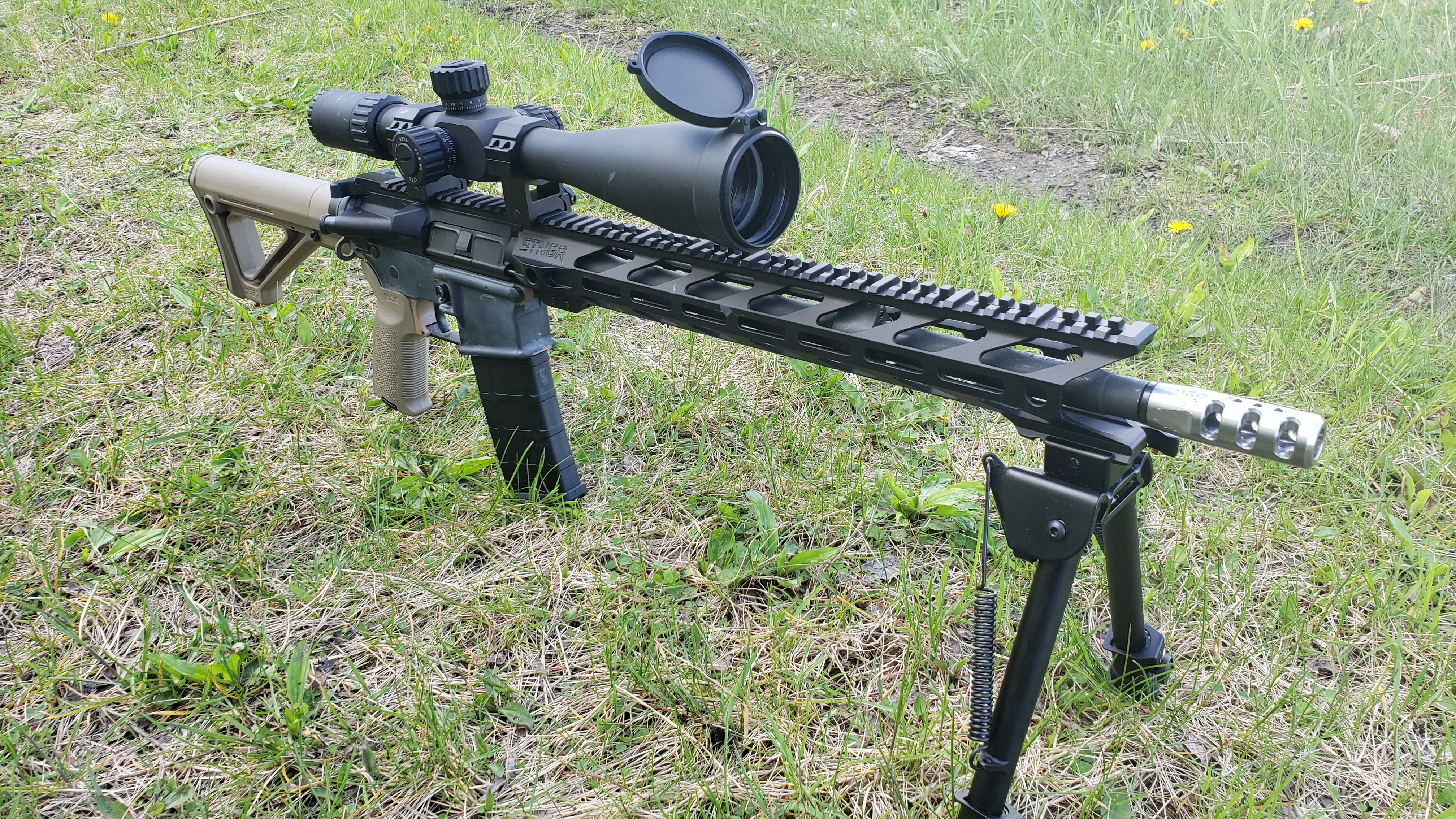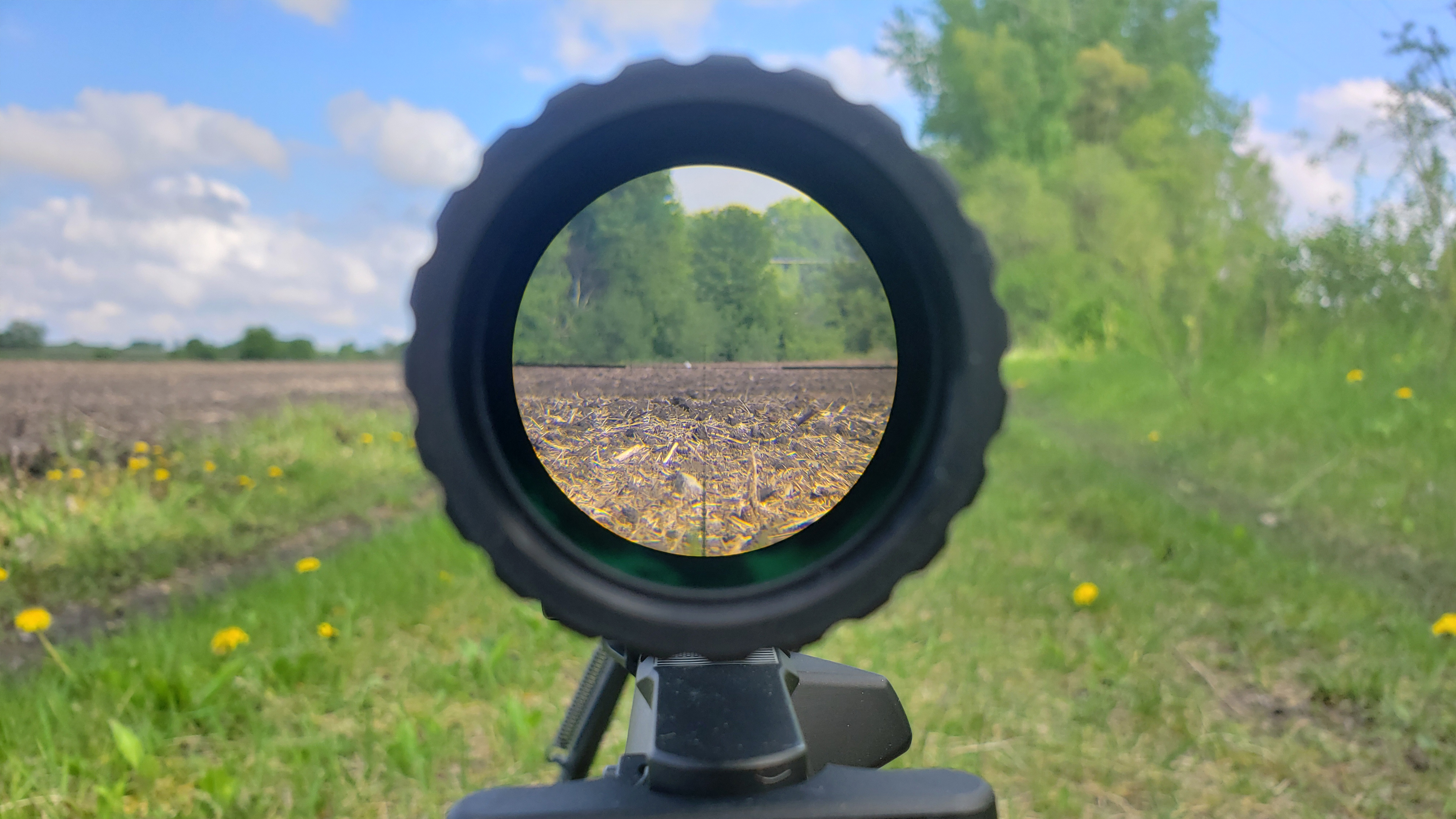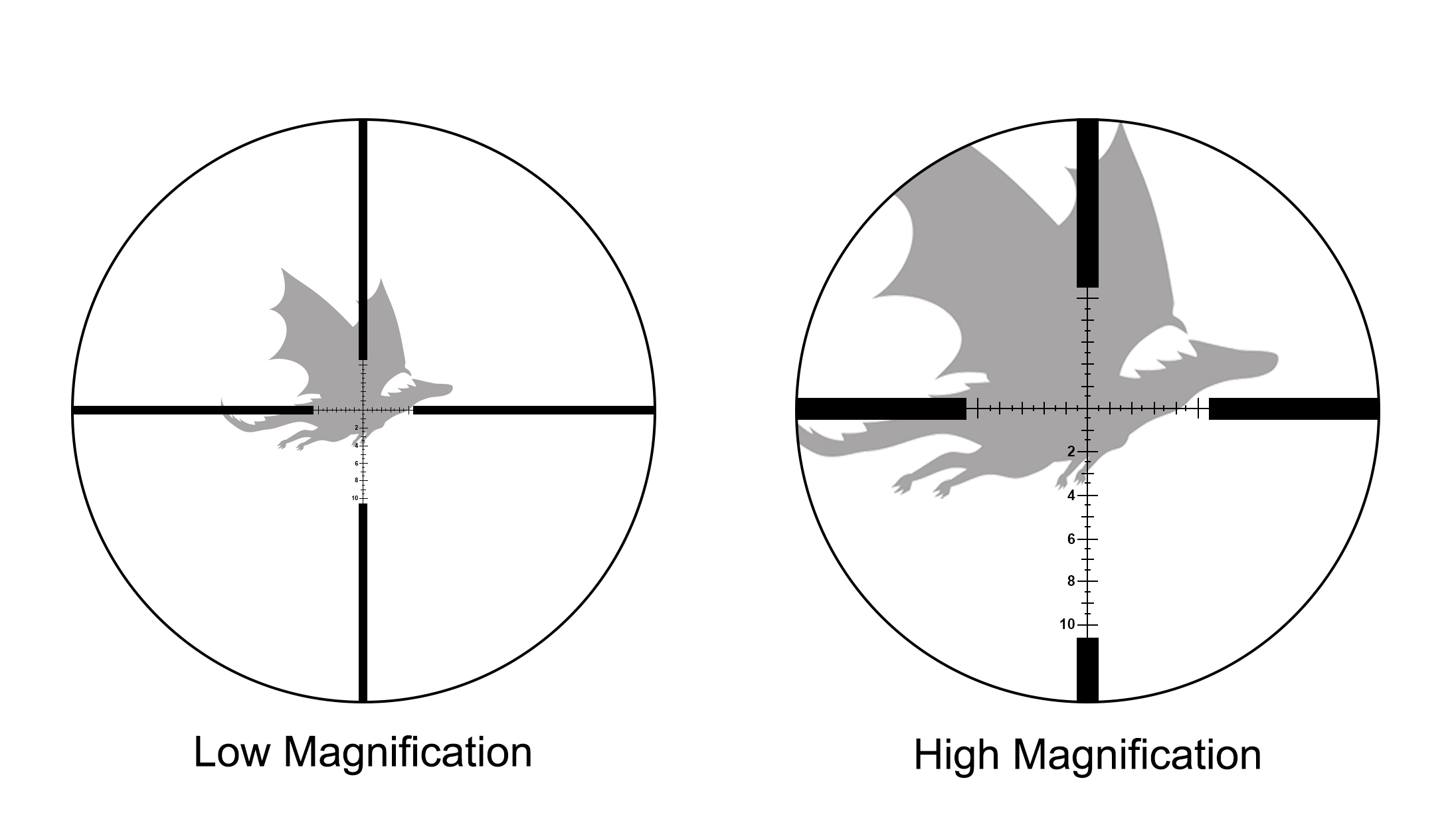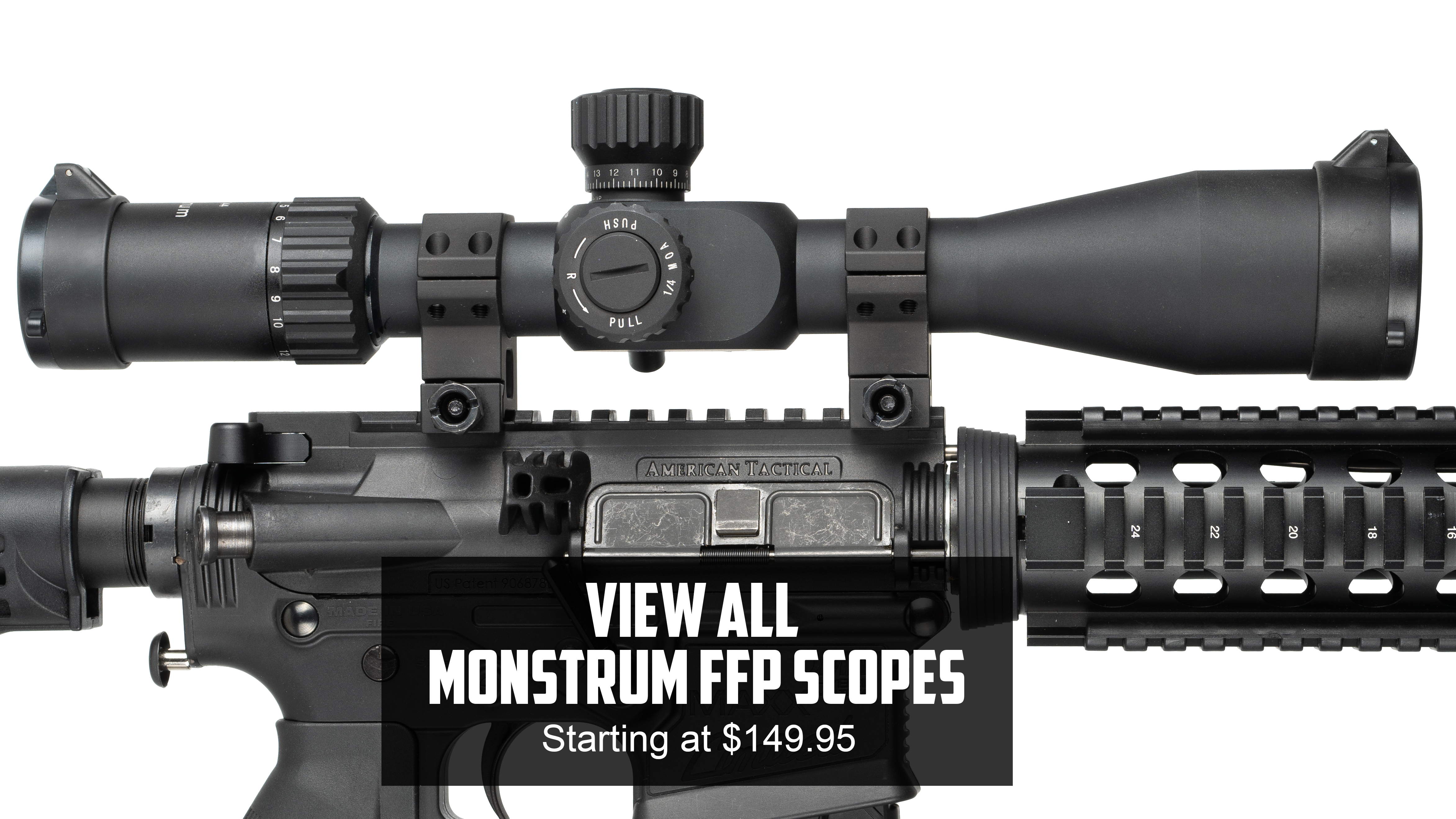
An Introduction to First Focal Plane Rifle Scopes
Posted by Eric Jezierski on Jun 4th 2019
What is the First Focal Plane
When shopping for a rifle scope there are volumes of information that can be considered to make sure you choose the perfect tool for your application. One key feature that is often overlooked by the un-initiated is the correct focal plane of the reticle for your needs. If you are looking to make sure you make the right choice, read on.

What Does First Focal Plane Mean?
Without getting overly technical, there are a lot of complex mechanisms inside your variable power scope. There are two different places that the reticle can be installed inside the scope, and those are on the focal planes. The first focal plane is near the objective lens, and the second is near the eyepiece lens (where you look through the scope).
Setting the reticle in the second focal plane is generally a less expensive process, and you will often find this on budget optics. The second focal plane reticles are usually more fragile and can be damaged by drops or heavy recoil. There are high end scopes that have second focal plane scopes that can be quite durable, but they are currently not the norm and the added build quality will be passed on to the consumer in the form of higher sticker prices.
When the reticle is on the first focal plane, it is possible to etch the reticle into the glass on the optic which builds durability into a scope. The current trend with high end optics is to place reticles in the first focal plane, and not just for the inherent durability.

What Makes First Focal Plane So Desirable?
One of the features shooters appreciate in first focal plane reticles is that they change size as the shooter adjusts the magnification. This is important because modern reticles are filled with information and tools to help a shooter become more efficient; reticles can help estimate range, account for hold-off without adjustments to the turrets, and lead moving targets, to name a few features. As the reticle increases in size as the magnification increases, the information on the reticle will remain consistent and measurements will remain accurate throughout the range of magnifications available.
One of the greatest benefits of having a reticle with accurate information at every level of magnification is that the shooter can be accurate much faster. When the shooter knows that they must hold left 1 MOA to account for spin drift and possibly 2 more MOA for wind, they can simply hold the reticle over and use the precise measurements in the reticle without guessing or taking time to adjust a turret and re-acquire the target. In most second focal plane reticles, the only way for this to be possible is to be on the maximum zoom for the optic.
While there are some of us out there that keep their scope maxed out all the time, professional and competitive shooters know there are benefits to backing off on the zoom sometimes. As you increase magnification, your field of view will narrow. A narrow field of view will make tracking a moving target much more difficult and decrease the shooter’s awareness of the situation down range.
While high quality scopes ship to the consumer with very highly polished glass, even the most expensive optics the image clarity will degrade as magnification is increased. This can actually cause it to become more difficult to spot your own trace and hits when at maximum magnification.

Why Would Anybody Ever Want a Second Focal Plane Reticle?
Some long-range target shooters do prefer their reticle in the second focal plane. Since the increasing magnification on the optic causes the scope to also zoom in on the reticle, some shooters feel that they become less precise when at maximum magnification with a first focal plane reticle. The second focal plane reticle will be much finer when zoomed in and this will allow the shooter to be more precise with their shot placement.
A well-trained shooter can be very effective with second focal plane reticle, when it is in a quality optic, but most professionals and serious enthusiasts choose to have their reticle in the first focal plane.
Final Thoughts
First focal plane optics have become the popular choice for most serious enthusiasts and professionals in the industry today for good reason. They have a durable reticle, they offer quick adjustments on target without turret manipulation, and they give the shooter accurate information at all magnifications within the optic. For those who have not yet used a first focal plane optic, they are quite intuitive and easy to get used to. In today’s market, it is difficult to make an argument on why one should choose any other option.


